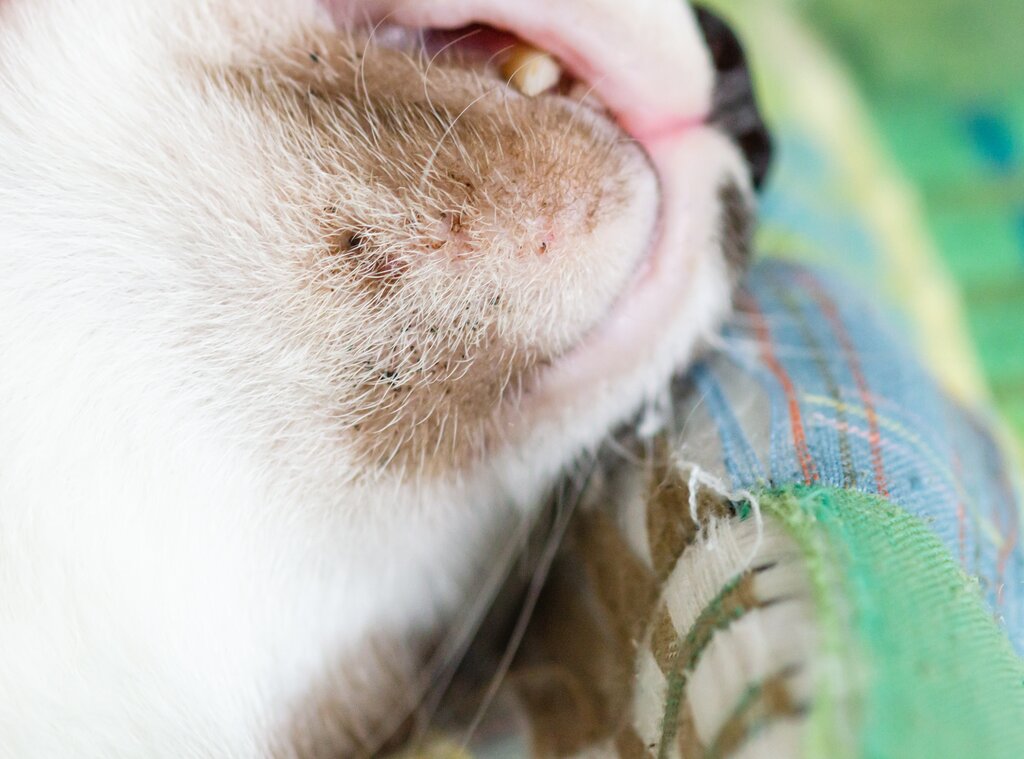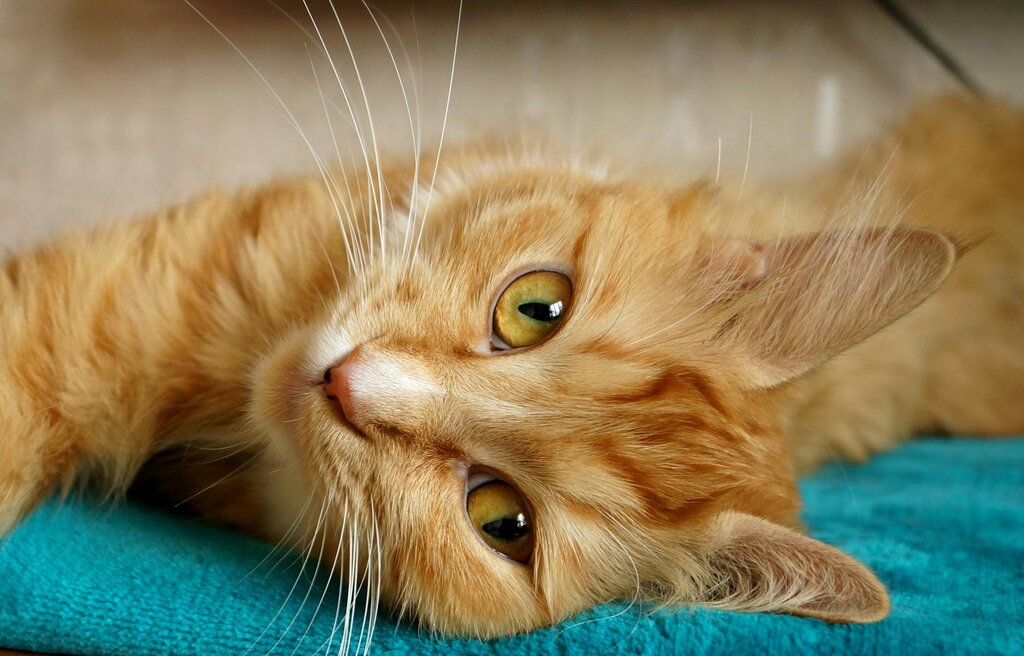Last Updated: 13/06/2025
What is Feline Acne: Common Causes and Solutions
Does your cat have feline acne? Check out the common causes and treatment for this skin condition.
Author: Dr Teagan Lever BVSc (Hons)
Reading Time: 10 minutes - short read
It's not just teenagers who get pimples. If you've noticed lumps, bumps or black crusts on your cat's chin, it could be cat acne (medically referred to as feline acne). Discover the signs, cause and treatment of acne in cats.
What is Cat Acne?

Your cat has sebaceous glands associated with hair follicles all over her body that release an oily substance known as sebum. When released from the glands, sebum helps to waterproof the hair and maintain the skin's suppleness and health. Your cat's chin has a collection of special, larger sebaceous glands, known as the 'submental organ'. The secretion from these glands is used by your cat for scent marking. Over time you may notice this secretion as a dark, greasy material building up on items that your cat likes to mark with her face regularly.
Cat acne occurs when these submental organ glands overactive, or the hair follicle becomes blocked. This results in an accumulation of the greasy secretion on the chin hair, and the appearance of comedones (blocked hair follicles or 'blackheads'). The blocked hair follicles may become infected with bacteria, resulting in pustules. In severe cases, if many follicles are infected a deep skin infection may occur.
Symptoms of Cat Acne
Cat acne most commonly appears on the chin, but can also involve the skin along the lips and the commisures of the mouth. Initially, when comedones appear, most cats are asymptomatic. However, if these follicles become infected, inflammation of the follicle (folliculitis) and the surrounding area (furuncolosis) can be painful and very itchy for the cat. With very severe lesions, the cat may become systemically unwell, presenting with fever, depression, lethargy and anorexia.
Signs and symptoms of Cat Acne:
- Blackheads on the chin, and/or along the lips
- Papules or pustules
- Crusting and hair loss
- Pain and scratching
- Fever, depression, lethargy, anorexia in severe cases due to deep skin infection

Causes of Cat Acne
There are many potential causes of cat acne. In some cases it may be that the cat has just not been grooming the area enough, although it could also be a symptom of a fungal or mite infection, or a skin allergy, a common example is contact dermatitis from a plastic food dish. If you do suspect that your cat may have acne, you should take your cat to the vet to try and determine the underlying cause, and how to fix it.
Treatment for Cat Acne
The good news is that most cases of feline acne are mild, and will clear up with washing of the area with an antibacterial cleanser, like chlorhexidine, a few times daily. In severe cases where there is a deep skin infection present, your veterinarian may also prescribe antibiotics.
It can help to try and limit potential causes as well. Try swapping from a plastic food bowl to glass or stainless steel and wash both the food and water bowl daily. If your cat seems to neglect grooming her chin, washing it daily can also help to stop the buildup of sebum and prevent acne.
Help manage your cat's acne
Further Reading
Want to read more? Check out our other articles:
History
Our experts continually monitor the health and wellness space and we update our articles when new information becomes available.
Wed Nov 2 2022
Edited by Dr Teagan Lever BVSc (Hons)Dr Teagan Lever BVSc (Hons)
Head Veterinarian, BVSc (Hons)
Pet Circle's Head Veterinarian, Dr Teagan graduated from the University of Queensland in 2010 and went on to work in small animal and mixed practice in various locations around QLD & ACT before joining Pet Circle in early 2016. Dr Teagan has special interests in dermatology, nutrition and preventative health care. She feels privileged to witness the special bond people share with their pets on a daily basis and enjoys forming lasting relationships with pet parents and their fur children.

